How Does a Cordless Table Blender Compare to Traditional Blenders
 2025.11.06
2025.11.06
 News
News
1. Portability and Convenience
When it comes to blending in a modern kitchen, one of the most important factors that influences purchasing decisions is the portability and convenience of the appliance. Cordless table blenders and traditional blenders each offer unique advantages and disadvantages in this area, and understanding these differences can help you decide which type is best for your needs.
Cordless Table Blenders: The Ultimate in Portability
The most significant advantage of a cordless table blender is its portability. Unlike traditional blenders that are tethered to a power outlet, a cordless table blender operates on a rechargeable battery. This makes it incredibly easy to take the blender anywhere you go. Whether you’re blending a smoothie in the kitchen, preparing a salad dressing at a picnic, or whipping up a quick shake while traveling, the freedom from a power cord opens up a world of possibilities.
Ideal for Small Spaces
One of the main reasons people opt for cordless table blenders is the convenience they offer in small kitchens or environments where space is limited. Many people living in apartments or dormitories have limited counter space, and the added bulk of a traditional blender may be unwelcome. In contrast, a cordless blender is typically more compact and easier to store, making it perfect for those who live in spaces where every inch of countertop and cabinet storage is precious.
Take It Outdoors
Another key benefit of cordless table blenders is their ability to be used outdoors or in locations where power outlets are not available. This makes them ideal for use during outdoor activities such as camping, picnics, or barbecues. With a cordless blender, you can prepare smoothies, frozen drinks, or sauces without the need to find an electrical outlet, which makes it an incredibly versatile tool for people who love to blend while away from home.
For instance, if you’re at the beach or camping in the woods, you could bring your cordless blender along with you to make refreshing smoothies or protein shakes. All you need is a charged battery, and you’re good to go. There’s no need to worry about running extension cords or finding an electrical source — the battery-powered design ensures you have the freedom to blend anywhere.
Easy to Clean and Store
Because cordless table blenders are typically more compact, they are also easier to clean and store. Their small size makes them easy to wash by hand or in a dishwasher, and many models come with detachable parts that can be cleaned quickly. The absence of a bulky motor base means that there are fewer components to clean, which is a big plus for those who want to save time in the kitchen.
Moreover, due to their smaller footprint, they are often easier to store in tight spaces like kitchen drawers or cabinets, further enhancing their appeal in homes with limited space. The ability to store a cordless blender in a drawer or a cupboard also helps in maintaining a clean and organized kitchen.
Traditional Blenders: The Limitations of Corded Convenience
While traditional blenders have their own set of advantages, they are inherently less portable than cordless models. The defining characteristic of traditional blenders is the power cord, which requires them to be positioned near an electrical outlet. This power dependence can limit their usability, especially in areas where outlets are scarce or if you’re working in tight, crowded spaces.
Fixed Location Requirement
Traditional blenders are designed with the assumption that they will always be in close proximity to an electrical outlet. The power cord can limit your flexibility in terms of where you use the blender. In a large kitchen, this may not be a significant issue, but in smaller kitchens or areas where you need to move the blender frequently, this restriction can feel frustrating. If the cord is too short or the outlet is too far, it could make using a traditional blender in your desired location awkward or even impossible.
Additionally, some users may find the power cord cumbersome, especially when they are trying to make a quick meal or shake. You may have to rearrange your kitchen layout or move other items out of the way just to plug the blender in, which can be time-consuming and irritating.
Not Ideal for Outdoor Use
Traditional blenders are not designed for outdoor use. Unless you have access to a portable power generator or an outlet outside, you’ll be limited to using traditional blenders only in environments where power outlets are available. For example, if you’re hosting a barbecue in your backyard or on a camping trip, a traditional blender will be of little use unless you have a reliable power source. This makes traditional blenders less versatile than their cordless counterparts in outdoor settings.
Size and Storage Challenges
Traditional blenders, especially higher-end models, tend to be bulkier and heavier. They often have larger motor bases, which can take up considerable counter space and make them less ideal for homes with limited kitchen storage. Not only do these blenders require a specific place to be plugged in, but they also need a relatively spacious area to sit on your countertop.
Their size can be an issue for smaller kitchens or for people who only need a blender for small tasks. The motor base, with its larger footprint, can be difficult to store and can take up a lot of cupboard space. For someone who uses a blender infrequently, the effort of pulling it out, plugging it in, and cleaning it afterward might feel like more trouble than it’s worth.
Portability Comparison Table: Cordless vs Traditional Blenders
| Feature | Cordless Table Blender | Traditional Blender |
|---|---|---|
| Portability | Highly portable; works anywhere, even outdoors | Not portable; confined to areas near electrical outlets |
| Power Source | Rechargeable battery; no need for an outlet | Power cord; must be plugged into an outlet |
| Ease of Storage | Compact; easy to store in small spaces | Bulky; takes up significant space |
| Outdoor Use | Ideal for outdoor use like camping, picnics | Not suitable for outdoor use unless power is available |
| Cleaning and Maintenance | Easy to clean; smaller, fewer parts to maintain | More complex cleaning; larger motor base to maintain |
2. Power and Performance
When it comes to kitchen appliances, power and performance are two of the most important factors to consider, especially when choosing a blender. The cordless table blender and the traditional blender each offer different experiences in terms of blending efficiency, motor strength, and versatility. Understanding how these two types of blenders compare in terms of their power and performance is key to choosing the right one for your needs.
Cordless Table Blenders: Limitations in Power and Performance
While cordless blenders have evolved significantly in recent years, they still have inherent limitations in power compared to their corded counterparts. The most noticeable difference is the battery-powered motor, which typically doesn’t match the performance of traditional blenders that plug into a continuous power source. This can affect how effectively the blender performs certain tasks, especially those that require high-speed or high-torque motors.
Battery Power Constraints
The motor in a cordless table blender runs off a rechargeable battery, which means that its power supply is limited. As the battery depletes, the motor’s performance can decrease, leading to slower blending or inconsistent results. For example, thicker ingredients, such as frozen fruits, leafy greens, or hard vegetables, can be more difficult for a cordless blender to handle. The blender may require multiple attempts or longer blending times to process these tougher ingredients, which can be frustrating for users seeking efficiency.
In comparison, traditional blenders, which are plugged directly into an electrical outlet, have a consistent and constant power source that allows them to operate at maximum strength without the risk of running out of power mid-use. As a result, cordless blenders, despite being highly portable, often fall short when it comes to tackling heavy-duty tasks that require sustained power.
Struggles with Ice and Frozen Ingredients
One of the most noticeable limitations of a cordless blender is its inability to handle hard or frozen ingredients. Tasks like crushing ice or blending frozen fruits and vegetables require a powerful motor capable of generating enough force to break down tough, solid materials. Cordless blenders, with their limited motor capacity, may struggle with these tasks. The motor might stall, produce uneven results, or take much longer to blend. If you regularly make smoothies with ice or frozen fruits, you may find that a cordless blender isn’t up to the task.
Blending Large Quantities
When it comes to preparing large batches of food or beverages, the limited battery life of a cordless blender becomes a factor. These blenders are typically designed for small, personal servings. If you try to blend large quantities of ingredients, the motor may start to weaken, and the battery may drain faster than expected. The blending time will be longer, and you may need to stop to recharge the battery midway through.
Traditional Blenders: Consistent Power and Exceptional Performance
In contrast, traditional blenders that plug directly into the wall offer unmatched power and performance. The continuous power supply allows these blenders to consistently perform at high speeds and with strong motor capabilities, even when faced with tough ingredients.
High-Powered Motors for Heavy-Duty Tasks
Traditional blenders are typically equipped with high-powered motors that make them highly effective at handling a range of tasks, from blending smooth purees to crushing ice. These motors can generate the necessary torque to break down even the toughest ingredients without the need for multiple blending cycles. Whether you are making a creamy soup, smoothie, or nut butter, a traditional blender can get the job done much faster and more efficiently than its cordless counterpart.
The strength of a traditional blender’s motor allows it to handle heavy-duty tasks that require high-speed blending or sustained power. Whether it’s pulverizing ice cubes for a frozen drink or blending thick batters, traditional blenders can do it all. With consistent power, they can blend large batches at once without slowing down, making them ideal for families, large households, or those who entertain often.
Perfect for Frozen Ingredients and Ice Crushing
Traditional blenders excel when it comes to tasks that involve frozen ingredients or ice crushing. The motor’s strength and continuous power supply enable these blenders to generate enough force to crush ice cubes or blend frozen fruits and vegetables with ease. For example, when making a smoothie with frozen berries, a traditional blender can crush and incorporate these hard ingredients much faster and more efficiently, providing a smoother consistency. In contrast, cordless blenders may produce uneven results or require additional time to break down frozen ingredients.
This is why traditional blenders are the preferred choice for people who regularly make frozen drinks, smoothies, or sorbets. The robust motor and high power output ensure a consistent texture and even blending.
Blending Large Quantities Without Issue
For individuals or families who need to prepare large quantities of food or beverages at once, traditional blenders are the obvious choice. The capacity and performance of these blenders allow you to blend larger amounts of ingredients in a single cycle. Whether you’re preparing a large batch of soup, a smoothie for multiple people, or dough for baking, traditional blenders handle these jobs easily. You won’t need to worry about the motor slowing down or the blender stopping due to a drained battery.
Because traditional blenders are connected to a continuous power source, there is no need to pause for recharging, making them ideal for high-volume blending tasks. You can blend more servings in less time, which is a significant advantage if you need to prepare meals or drinks for a group.
Power and Performance Comparison Table: Cordless vs Traditional Blenders
| Feature | Cordless Table Blender | Traditional Blender |
|---|---|---|
| Power Source | Rechargeable battery; limited power | Continuous power supply from outlet |
| Motor Power | Lower motor power; struggles with tough tasks | High motor power; handles tough tasks like ice crushing and blending frozen ingredients |
| Performance with Frozen Ingredients | Limited performance; struggles with ice and frozen fruits | Excellent performance; efficiently crushes ice and blends frozen ingredients |
| Performance with Hard Vegetables | Slower or less effective; multiple attempts needed | Fast and effective; handles tough vegetables like carrots, beets, etc. |
| Blending Speed | Slower due to battery limitations | Faster due to consistent power |
| Capacity for Large Batches | Limited capacity; ideal for small servings | High capacity; blends large quantities efficiently |
| Battery Life/Usage Time | Limited; requires frequent recharging | Unlimited as long as plugged in |
Why Power and Performance Matter
When selecting a blender, the power and performance are critical factors that determine how effective the blender will be in handling different tasks. If you mainly use your blender for light tasks like making smoothies or mixing protein shakes, a cordless table blender might be sufficient. However, if you regularly tackle more demanding tasks like crushing ice, blending thick soups, or making large batches of smoothies, a traditional blender is likely a better fit.
Cordless blenders excel in convenience and portability, making them great for personal use or occasional tasks. However, their power limitations can become an issue if you’re looking to blend tougher ingredients or prepare larger quantities. In contrast, traditional blenders offer consistent, high-powered performance, making them ideal for those who need reliable, efficient blending, especially for heavy-duty tasks.
3. Battery Life and Charge Time
When choosing a blender, one of the key considerations for cordless table blenders is the battery life and charge time. These two factors can significantly impact your overall experience with the appliance, as they determine how long you can use the blender before needing to recharge and how often you’ll need to stop for a battery boost. Understanding the battery limitations and recharging requirements of cordless models, as well as how traditional blenders operate without these issues, is crucial for making an informed decision.
Cordless Table Blenders: The Challenge of Battery Life
While cordless table blenders offer the convenience of portability, their battery life is one of the most significant concerns. Since they rely on a rechargeable battery to power the motor, their usability is inherently limited by how long the battery lasts and how often you need to recharge it. Depending on the model and brand, battery life typically ranges from 15 to 30 minutes of continuous blending on a full charge. However, there are several factors that can influence the battery performance and charge time.
Factors Affecting Battery Life
-
Battery Capacity and Type: The quality and size of the battery used in a cordless blender play a major role in its lifespan. Higher-end models often use more efficient lithium-ion batteries, which tend to have a longer lifespan and faster recharge times compared to standard batteries. However, even with a high-capacity battery, continuous use can cause the battery to drain quickly, especially when dealing with thick ingredients, such as frozen fruit, ice, or hard vegetables.
-
Blending Time and Usage: The battery life of a cordless blender also depends on how long you are using it at one time. A single smoothie might only take a few minutes to blend, but if you’re blending for longer periods or mixing dense ingredients, the motor’s power demand increases, causing the battery to deplete faster. This can be frustrating if you need to use the blender for multiple tasks or larger quantities, as the blender might need to be recharged after each use.
-
Blending Difficulty: If you’re using the blender for heavy-duty tasks, such as crushing ice or blending thick smoothies, the motor requires more power, which accelerates battery drain. On the other hand, for lighter tasks like mixing liquids or softer fruits, the battery might last longer. Cordless blenders are ideal for light blending jobs but struggle with more demanding applications.
Charge Time and Quick Charging Features
Another factor to consider is the charging time. The time it takes to fully recharge the battery can range anywhere from 1 to 4 hours, depending on the blender and its battery capacity. For people who use their blender frequently, this can become a major inconvenience, especially if you need to recharge it between uses.
Some cordless blenders come equipped with quick charge features, allowing the battery to charge faster. These models can often provide enough power for a full session in just 30 minutes to 1 hour of charging. However, even with quick charging capabilities, you may still find that you need to recharge the blender after each use if you are preparing larger quantities or using it multiple times in a row.
Shorter Battery Life for Larger Quantities
If you’re blending large batches, you will likely find that the battery depletes faster. Cordless blenders are generally designed for personal use or small servings. So if you’re preparing larger smoothies or blending ingredients for more than one person, you may need to recharge or take longer breaks between blending sessions. This becomes a significant limitation when compared to traditional blenders, which don’t rely on battery life.
Traditional Blenders: No Battery Worries
In stark contrast to cordless blenders, traditional blenders don’t face the same battery-related issues. Traditional blenders are powered by an electricity supply through a power cord, which means you can use them for as long as you need, without worrying about running out of battery or requiring a recharge. The ability to stay plugged in provides continuous power and performance, making traditional blenders ideal for both short and long blending sessions.
Continuous Use Without Interruptions
Since traditional blenders draw power directly from an electrical outlet, they are ideal for extended use. Whether you’re preparing a large batch of smoothies, blending a soup, or making a big batch of batter, the blender will maintain its full power throughout the entire process. There are no interruptions for recharging, which makes these blenders more suited for heavy-duty tasks and large quantities.
If you’re hosting a party or preparing meals for a family, a traditional blender can handle long, demanding blending sessions. You won’t need to worry about stopping to recharge the blender or running out of power halfway through.
No Charge Time to Consider
Because traditional blenders are constantly plugged into an outlet, there is no need to consider charge time. You don’t need to wait for the blender to recharge before you can use it again. This makes traditional blenders more practical for those who need to use their blender repeatedly throughout the day or for people who prefer instant availability without any downtime.
For example, if you’re preparing breakfast, lunch, and dinner using a blender, you can switch from task to task without waiting for the appliance to recharge. This constant access to power makes traditional blenders more reliable for people with busy kitchens, especially when blending for larger groups.
Battery Life and Charge Time Comparison Table: Cordless vs Traditional Blenders
| Feature | Cordless Table Blender | Traditional Blender |
|---|---|---|
| Power Source | Rechargeable battery; limited by charge | Plugged into an electrical outlet; continuous power |
| Battery Life | 15-30 minutes per charge, depending on use | Unlimited as long as plugged in |
| Charge Time | 1 to 4 hours depending on model | No charging required |
| Performance with Long Blending Sessions | Limited; battery drains quickly during extended use | Consistent power for long sessions |
| Recharging Between Uses | Required after each use, especially for large quantities | Not required; use as needed |
| Ideal for Large Quantities | Not ideal; struggles with larger batches | Ideal for large batches and heavy-duty tasks |
| Quick Charge Options | Some models offer quick charging | No charging required |
4. Size and Storage
When considering a blender for your kitchen, the size and storage convenience play a significant role in the decision-making process. Cordless and traditional blenders have distinct features in this regard, and understanding these differences can help you choose the right blender for your needs, especially if kitchen space is a concern.
Cordless Table Blender: Compact and Portable
Cordless blenders are designed to offer mobility and convenience without sacrificing performance. One of the standout features of a cordless table blender is its compact size. These blenders are typically smaller and lighter than traditional models, making them easy to store and carry around. This makes them a popular choice for those with limited kitchen space or for people who need a portable blender for on-the-go usage.
Advantages of Cordless Blenders’ Size
-
Ease of Storage
Cordless blenders are ideal for smaller kitchens where counter space is limited. Their compact design allows for easy storage in cabinets or drawers. When not in use, they take up significantly less space compared to larger, traditional blenders. This is particularly beneficial for individuals who live in apartments or homes with minimal kitchen space. -
Portability and Convenience
Cordless blenders are lightweight and battery-operated, making them perfect for those who want to take their blender to different locations. Whether you’re traveling, going to the gym, or on a picnic, you can easily pack your blender along without worrying about finding an outlet. Many cordless blenders come with a carrying case, enhancing their portability even further. -
Versatility
The smaller size of cordless blenders also means they are often designed for specific tasks, such as making smoothies, shakes, or pureeing small batches of food. This makes them a good option for individuals who only need a blender for light, everyday tasks and don’t require the heavy-duty capabilities of a traditional blender.
Challenges of Cordless Blenders’ Size
-
Limited Capacity
While a cordless blender’s small size is an advantage in terms of portability and storage, it can also limit the blender’s capacity. Most cordless models have a smaller blending jar or cup, making them less suitable for large quantities. If you need to blend big batches of food or smoothies for a group of people, a traditional blender might be a better fit. -
Battery Life Considerations
Since cordless blenders rely on rechargeable batteries, they might not be able to sustain heavy-duty use over extended periods. The battery life of a cordless blender is usually sufficient for small tasks, but it may not last as long as you might need for larger blending jobs. This can be a limiting factor if you require more power or need to use the blender for long periods.
Traditional Blender: Larger but More Powerful
Traditional blenders, with their powerful motors and large blending jars, are designed for people who need a durable, high-capacity blender for a variety of kitchen tasks. However, their larger size and weight can make them more challenging to store and handle. These blenders often come with additional features, like variable speed settings, multiple blending functions, and more powerful motors, but they do come with some trade-offs in terms of size.
Advantages of Traditional Blenders’ Size
-
Larger Capacity
Traditional blenders are much larger and typically come with bigger blending jars, which can hold more ingredients at once. This is ideal if you often need to blend large batches of food, like for meal prep, family gatherings, or commercial kitchens. You can make smoothies for several people at once or crush large quantities of ice without needing to stop and refill the blender. -
More Power for Heavy-Duty Tasks
The larger motor in traditional blenders allows them to handle more demanding tasks, such as blending thick soups, grinding nuts, or making nut butter. Their superior power means they can operate for longer periods without the risk of overheating or running out of battery life, as seen in cordless models. -
Durability and Stability
Traditional blenders are generally built to last. Many high-end models are made with durable materials such as stainless steel and are designed for heavy, daily use. The additional weight of the motor base helps provide stability, preventing the blender from shaking or moving around when blending thicker mixtures.
Challenges of Traditional Blenders’ Size
-
Bulky and Harder to Store
The most obvious disadvantage of traditional blenders is their size. These models can be quite bulky, taking up significant counter or cabinet space. If you have limited kitchen storage, finding a suitable spot for a traditional blender can be a challenge. In addition, their heavier weight can make them difficult to move around or store in hard-to-reach places. -
Requires More Counter Space
Unlike the compact cordless blender, traditional blenders require more space on your countertop. Their large motor base takes up a significant amount of real estate, and if you don’t have a lot of room for appliances, this can be an issue. This is particularly important for people who use their blenders regularly and need quick access, as moving the blender on and off the counter can become inconvenient. -
Not as Portable
Traditional blenders must be plugged into an electrical outlet to operate, which limits their portability. You can’t take them along to a park, on a trip, or to the gym like you can with a cordless model. This makes traditional blenders less versatile for people who need mobility or often blend in different locations.
Cordless vs. Traditional Blender: A Quick Comparison
| Feature | Cordless Blender | Traditional Blender |
|---|---|---|
| Size | Compact, lightweight, easy to store | Larger, bulkier, requires more storage space |
| Capacity | Smaller blending jar, suitable for single servings or small batches | Larger jar, ideal for large quantities |
| Portability | Highly portable, battery-operated, easy to carry | Not portable, needs an electrical outlet |
| Power | Limited power, suitable for light blending tasks | More powerful, handles heavy-duty tasks |
| Storage Space | Easy to store in cabinets or drawers | Requires more counter or cabinet space |
| Durability | May wear out faster due to battery limitations | Built to last with sturdy materials for heavy use |
| Battery Life | Limited, may need recharging after use | No battery issues, continuous operation with power outlet |
| Use Cases | Ideal for smoothies, shakes, and small meals | Perfect for soups, sauces, nut butters, and larger recipes |
5. Ease of Cleaning
When choosing between a cordless and a traditional blender, ease of cleaning is an important consideration. After all, no one wants to spend more time scrubbing their blender than actually using it. Both cordless and traditional blenders come with their own cleaning challenges and advantages. While cordless blenders tend to be simpler and more straightforward to clean, traditional blenders, with their larger components and powerful motors, require more time and effort for maintenance.
Cordless Table Blender: Simple and Convenient
Cordless blenders are often praised for their compact and user-friendly design, and this simplicity extends to their cleaning process. Since cordless blenders are generally smaller, they usually have fewer parts and are easier to take apart and clean thoroughly.
Advantages of Cordless Blenders’ Ease of Cleaning
-
Smaller Components
The smaller size of cordless blenders means they typically have fewer parts to clean. Most models feature a detachable blending jar or cup, a detachable blade assembly, and a motor base that houses the battery and electrical components. Since these blenders are designed to be portable and easy to use, the number of intricate components that need to be cleaned is minimal, making it quicker to get the job done. -
Dishwasher-Safe Parts
Many cordless blenders come with dishwasher-safe parts, which makes cleaning even more convenient. After using the blender, you can simply detach the blade and the blending jar and pop them in the dishwasher. The ease of putting these parts in the dishwasher helps eliminate the need for manual scrubbing, saving both time and effort. -
Smooth Surfaces for Easy Wiping
Cordless blenders tend to have fewer crevices and ridges around the motor base compared to traditional models. The motor bases are generally smooth, which means there is less chance of food particles getting stuck in difficult-to-reach places. Cleaning the motor base involves just a quick wipe-down, and in most cases, it can be done with a damp cloth or sponge. -
No Heavy Duty Cleaning
Because cordless blenders are typically used for smaller, lighter tasks such as smoothies, shakes, or baby food, the mess they make tends to be more manageable. You don’t often find yourself needing to clean up large amounts of spilled food or ingredients, which further reduces the cleaning time and effort.
Challenges of Cordless Blenders’ Cleaning
-
Motor Base Cleaning
While the blending jar and blades are easy to clean, the motor base (which houses the battery and electrical components) can be trickier. Most cordless blenders are not waterproof, so you can’t simply submerge the base in water for cleaning. The motor base should be wiped down with a damp cloth, but getting into tight spaces around buttons and the charging port can require a bit more care. -
Battery Maintenance
Some cordless blenders require regular maintenance of their battery compartment to ensure longevity and optimal performance. While this doesn’t necessarily affect day-to-day cleaning, ensuring the battery area remains dry and free from excess moisture is crucial to maintaining the blender’s functionality.
Traditional Blender: More Complex but Thorough
Traditional blenders, due to their larger motor bases, extra parts, and more powerful motors, often present a more complex cleaning process. While many higher-end traditional blenders feature advanced cleaning technologies, such as self-cleaning functions, they still require more effort to maintain than their cordless counterparts.
Advantages of Traditional Blenders’ Ease of Cleaning
-
Self-Cleaning Functionality
Some high-end traditional blenders come with self-cleaning modes that make the cleaning process much easier. In these blenders, you simply add warm water and a drop of dish soap to the blending jar, and then run the blender on its cleaning cycle. This can remove most of the buildup from blending, saving time and effort in manual cleaning. While this doesn’t eliminate the need for occasional scrubbing, it is a significant advantage over cordless models. -
Larger Blending Capacity
The larger jars in traditional blenders can often be cleaned more thoroughly with less effort because they can hold more water and cleaning solution during the self-cleaning process. Additionally, the wider opening of the jar makes it easier to reach in with a sponge or brush for a deep clean. -
Sturdier, Easy-to-Clean Materials
Many traditional blenders are made with durable, non-porous materials like glass or high-quality plastic. These materials are less likely to stain or absorb odors from food, which helps make the cleaning process more straightforward. As long as the blender is cleaned promptly after use, stubborn food residues like fruit pulp or nut butter don’t tend to stick to the surfaces as easily. -
Disassembly for Thorough Cleaning
Many traditional blenders allow for complete disassembly of their parts, including the lid, jar, and blade assembly. This makes it easier to clean the blender thoroughly, especially in areas where food tends to get stuck, like under the blade assembly.
Challenges of Traditional Blenders’ Cleaning
-
Multiple Parts to Clean
Traditional blenders tend to have more components than cordless blenders. This includes the motor base, the blending jar, the lid, the blade assembly, and often additional accessories like tamper sticks. Each of these parts requires cleaning, which can be time-consuming, especially if food gets stuck in hard-to-reach areas. -
Difficult-to-Clean Motor Base
Similar to cordless blenders, the motor base of traditional blenders is usually not waterproof. This means it can’t be submerged in water and must be wiped down with a damp cloth. However, because traditional blenders are often larger and more powerful, the motor base can have more nooks and crannies where food and liquid can accumulate. This makes cleaning the motor base more challenging and potentially more time-consuming than with cordless blenders. -
Large Size and Heavy Parts
Traditional blenders are typically larger and heavier than cordless blenders, which can make them cumbersome to handle during cleaning. The jar is often heavier, and cleaning the blender thoroughly, especially if it has multiple parts that need to be scrubbed individually, can feel like a bit of a workout. Additionally, the heavier weight of the base and motor means that you may need to move the entire blender to a sink or counter space for cleaning. -
Manual Scrubbing Needed
Even if a traditional blender has a self-cleaning function, you will still need to do some manual scrubbing on occasion to get rid of particularly stubborn residues, like dried-on food or oils. This can be especially true for high-powered blenders that handle dense or thick mixtures, such as nut butters, doughs, or soups.
Cordless vs. Traditional Blender: A Quick Comparison
| Feature | Cordless Blender | Traditional Blender |
|---|---|---|
| Parts to Clean | Fewer parts, easier to detach and clean | More parts, including motor base, jar, lid, and blade assembly |
| Dishwasher-Safe | Many parts are dishwasher-safe | Some parts are dishwasher-safe, but often not all |
| Self-Cleaning | No self-cleaning function, manual cleaning required | Some models offer self-cleaning functionality |
| Motor Base Cleaning | Requires wiping with a damp cloth | Requires wiping with a damp cloth, but can be more complicated due to size |
| Cleaning Time | Generally quicker due to fewer parts and smaller size | Takes longer due to larger parts and more cleaning steps |
| Mess Handling | Best for small tasks with less mess | Handles large batches but may require more effort to clean up after |
| Durability of Materials | Generally made from plastic, easier to clean, but prone to stains | Often made of glass or durable plastic, may require extra care to prevent stains |
6. Use Cases
When choosing between a cordless table blender and a traditional blender, the intended use plays a significant role in the decision-making process. Both types of blenders are designed to excel at different tasks, and understanding their capabilities will help you determine which one best suits your needs. Whether you need a blender for quick, everyday tasks or for more complex, heavy-duty use, both cordless and traditional blenders have specific advantages and limitations.
Cordless Table Blender: Best for Light, Quick Tasks
Cordless table blenders are designed for mobility and convenience, making them ideal for tasks that require little preparation or cleanup. These blenders are compact, lightweight, and generally less powerful than traditional models, but they offer flexibility for users who need a blender on the go or for lighter, everyday tasks.
Ideal Use Cases for Cordless Blenders
-
Smoothies and Milkshakes
Cordless blenders are perfect for making smoothies and milkshakes, especially when you’re blending small quantities. They are powerful enough to blend soft fruits, vegetables, yogurt, and liquids into smooth and creamy textures. The convenience of cordless blenders makes them excellent for quick, single-serve smoothies, which is ideal for individuals who live alone, are always on the go, or simply want a quick breakfast or snack. -
Individual Servings
If you’re looking to prepare individual portions, a cordless blender is an excellent choice. Its small size allows you to blend just the right amount for one person without the need to clean up a large blender jar afterward. This is perfect for anyone who doesn’t need to make large batches of food or drink. Whether it’s a smoothie, shake, or a small batch of hummus or salsa, the cordless blender is a compact and easy solution. -
Small Batch Salsas and Dips
Making small batches of salsa, guacamole, or other dips is a breeze with a cordless blender. These blenders can chop and blend small quantities of vegetables, herbs, and seasonings into a well-blended consistency, perfect for snacking or casual meals. Whether you’re prepping for a single person or a small gathering, a cordless blender can handle the task quickly without needing to clean a large, complicated blender afterward. -
On-the-Go Use
One of the major advantages of cordless blenders is their portability. These blenders are lightweight and battery-operated, so they can be easily packed for travel, picnics, or even workout sessions. If you need a quick smoothie before hitting the gym, or if you’re traveling and need to prepare food for yourself on the go, the cordless blender is the perfect solution. Its compact design makes it easy to store and carry without taking up much space in your luggage or kitchen. -
Small Apartments or Limited Storage
In a small apartment or shared living space, storage can be a challenge. Cordless blenders are designed to take up minimal space. They are small enough to fit in a kitchen drawer or a cabinet without crowding the countertop. For individuals who don’t want a large appliance that takes up a lot of room, the cordless blender is a great option for light, everyday blending tasks without sacrificing counter space.
Challenges of Cordless Blenders for Heavy-Duty Tasks
-
Limited Power and Capacity
While cordless blenders are excellent for light, quick tasks, they generally lack the power and capacity needed for more demanding tasks, such as blending large quantities or handling thick ingredients. Tasks like crushing ice, making nut butter, or blending soups can be challenging or impossible for most cordless blenders. -
Battery Life and Charging
Since cordless blenders run on batteries, they are limited by battery life. Larger tasks or prolonged blending sessions will drain the battery, requiring recharging. For individuals who want to blend multiple servings or heavier ingredients, the battery limitations of cordless blenders can be frustrating.
Traditional Blender: More Versatile for Heavy-Duty Blending
Traditional blenders, with their larger motor and greater capacity, are designed to handle a wide range of blending tasks. Whether you need to crush ice, blend hot soups, or make large batches of smoothies, traditional blenders provide the power and versatility needed to tackle more complex cooking needs.
Ideal Use Cases for Traditional Blenders
-
Large Batch Smoothies and Shakes
Traditional blenders are ideal for preparing large batches of smoothies and milkshakes. With their larger jars and higher motor capacity, they can handle multiple servings of smoothies or shakes at once, making them perfect for families, meal prepping, or hosting gatherings. If you entertain frequently or have a large family, a traditional blender is more suited for efficiently blending large quantities of ingredients. -
Soups, Sauces, and Hot Blending
Traditional blenders can easily handle hot ingredients, making them perfect for preparing soups or sauces. High-end models often come with special features like temperature control or a hot food blending setting, allowing you to blend and heat soups or sauces in one step. If you cook a lot of soups, purees, or sauces, a traditional blender will provide the power and capacity to blend ingredients thoroughly without the need for separate cooking or heating processes. -
Nut Butters and Thick Mixtures
Traditional blenders are ideal for making nut butters, doughs, or other thick, heavy mixtures. Their larger motor and robust blade systems can break down dense ingredients like peanuts, almonds, or seeds into smooth nut butter. If you like to make your own peanut butter, almond butter, or other spreads, a traditional blender can handle the job without straining. -
Crushing Ice and Frozen Ingredients
With their powerful motors and durable blades, traditional blenders are excellent at crushing ice and blending frozen fruits or vegetables. Whether you’re making a frozen cocktail, a smoothie with frozen berries, or a crushed ice base for cocktails, traditional blenders excel at breaking down hard, frozen ingredients. Cordless blenders often struggle with this task due to their smaller motor capacity. -
Versatile Cooking and Baking Tasks
Traditional blenders are more versatile when it comes to food prep for cooking and baking. You can use them to blend ingredients for batters, pancakes, muffins, or even smoothie bowls. Their larger capacity means you can process multiple ingredients at once, saving time when prepping for larger meals or batches. They also come with various settings and speeds to accommodate different types of recipes and textures.
Challenges of Traditional Blenders for Quick and Small Tasks
-
Bulkier and Less Portable
Traditional blenders, especially high-end models, can be large and bulky. This makes them less suitable for quick, on-the-go tasks like blending a smoothie in a hurry or for travel use. Unlike cordless blenders, traditional blenders are not portable and require access to a power outlet, making them impractical for people who need a blender for spontaneous or mobile use. -
Cleaning and Maintenance
Due to the complexity and larger number of parts, cleaning a traditional blender can be more time-consuming than cleaning a cordless blender. Additionally, traditional blenders are typically heavier, which can make them harder to handle during cleaning. For people with limited kitchen storage or those who don’t want to invest time in cleaning a large blender, this can be a downside.
Cordless vs. Traditional Blender: A Quick Comparison
| Feature | Cordless Blender | Traditional Blender |
|---|---|---|
| Primary Use | Ideal for light, quick tasks like smoothies or shakes | Suitable for a wide range of tasks like soups, nut butters, and large batch smoothies |
| Capacity | Best for individual servings or small batches | Larger capacity for multiple servings or heavy-duty blending |
| Blending Power | Sufficient for light blending (fruits, yogurt) | Powerful motor, handles tougher tasks like crushing ice, blending hot soups |
| Portability | Highly portable, battery-operated, easy to carry | Not portable, requires an outlet for use |
| Best for | On-the-go, small apartments, quick snacks | Families, meal prep, heavy-duty use, frequent blending |
| Cleaning | Easy to clean with fewer parts, many parts are dishwasher safe | Requires more effort due to multiple parts and motor base |
| Price Range | Typically more affordable, budget-friendly | Higher price range, especially for advanced features |

 English
English España
España
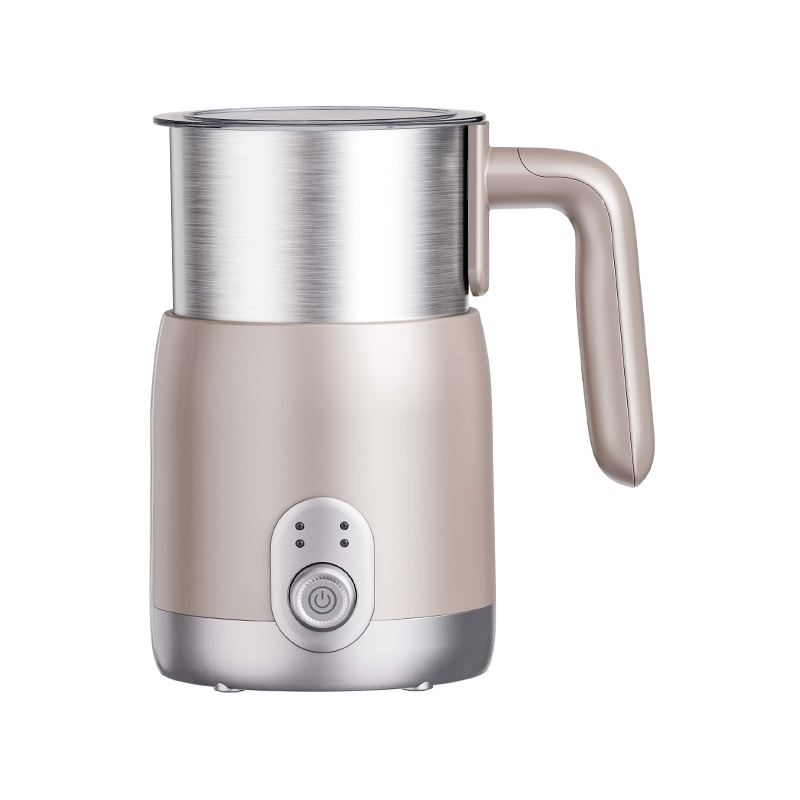 SEE more
SEE more
 SEE more
SEE more
 SEE more
SEE more
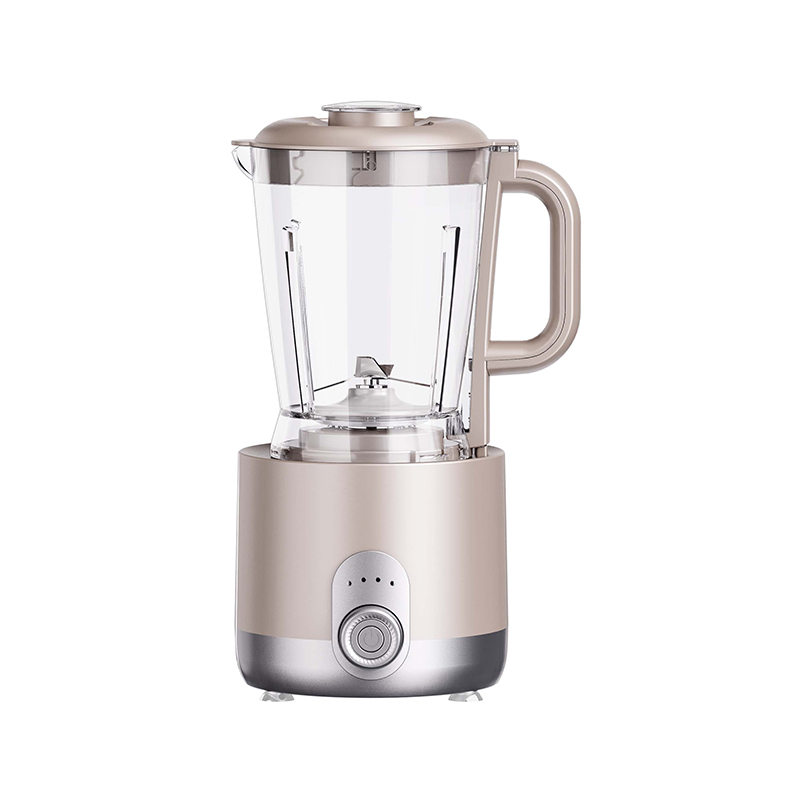 SEE more
SEE more
 SEE more
SEE more
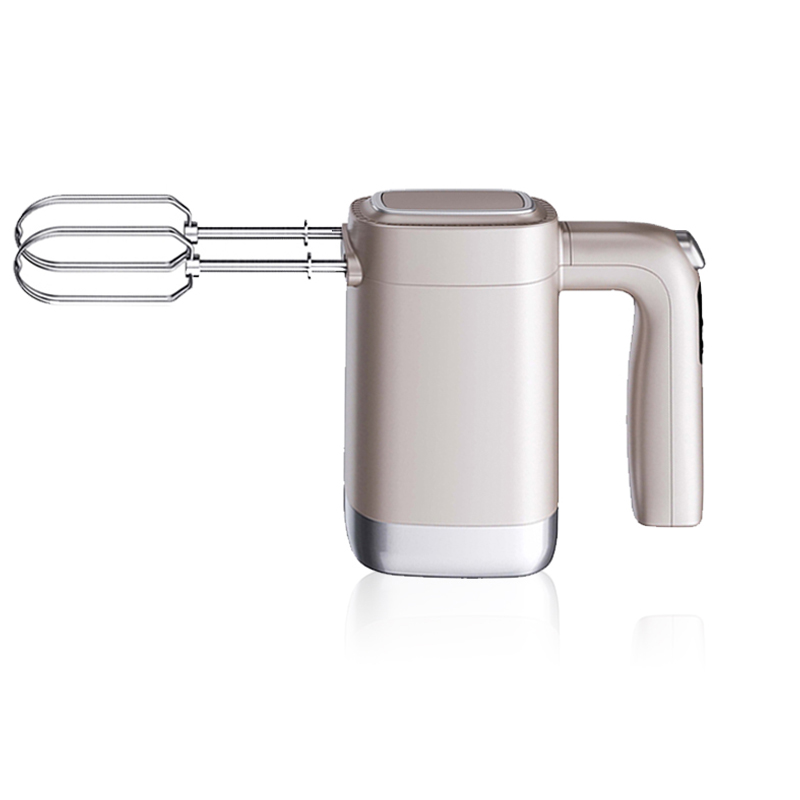 SEE more
SEE more
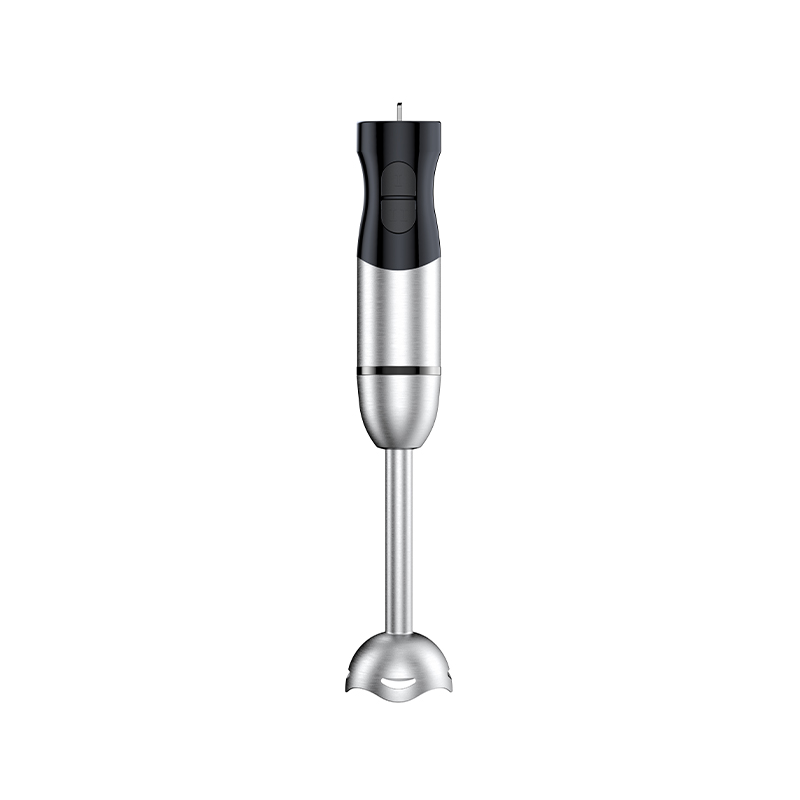 SEE more
SEE more
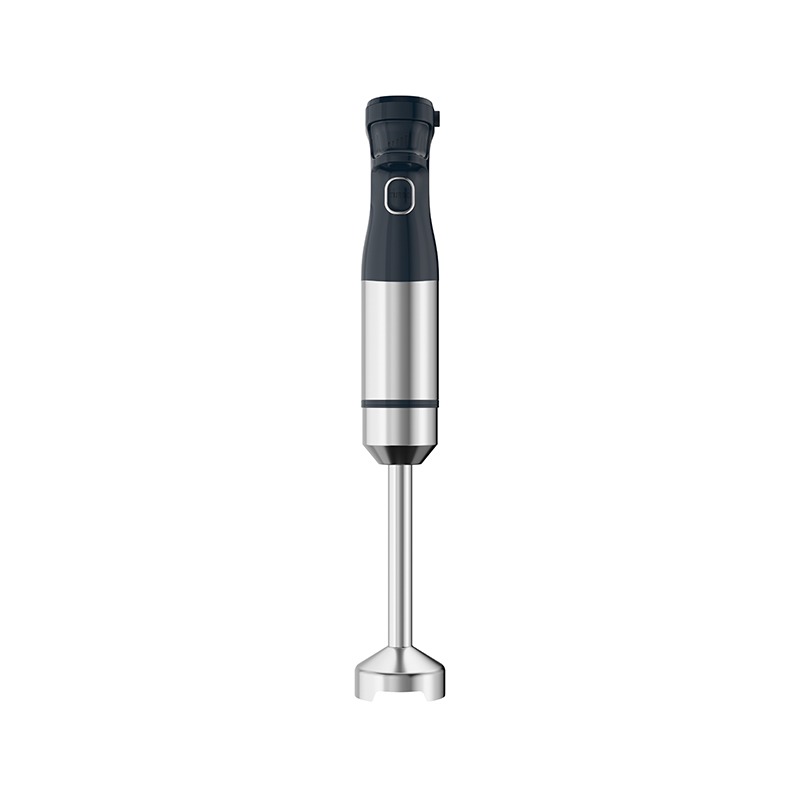 SEE more
SEE more
 SEE more
SEE more
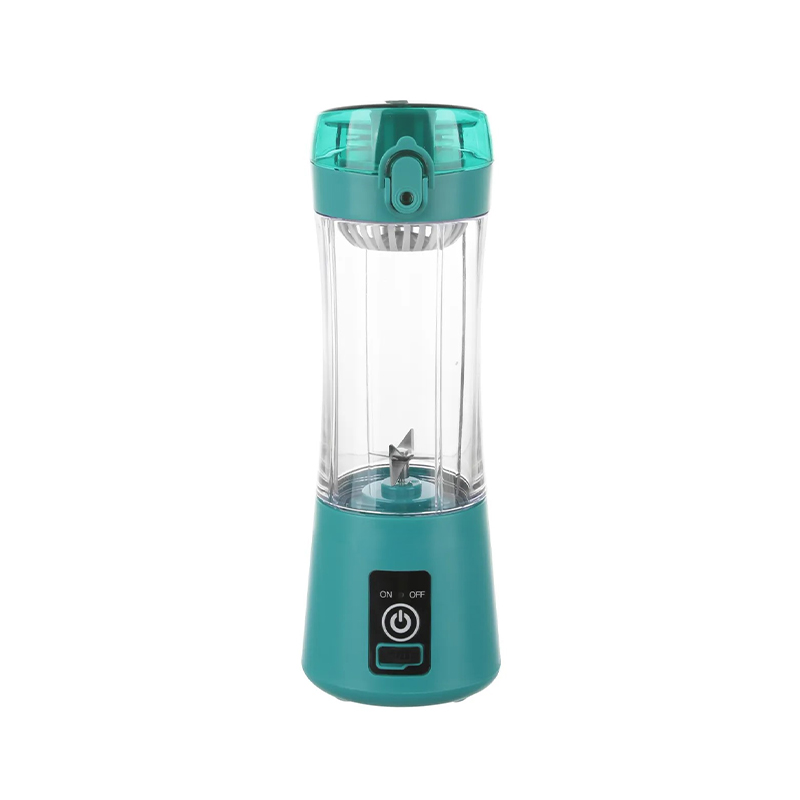 SEE more
SEE more
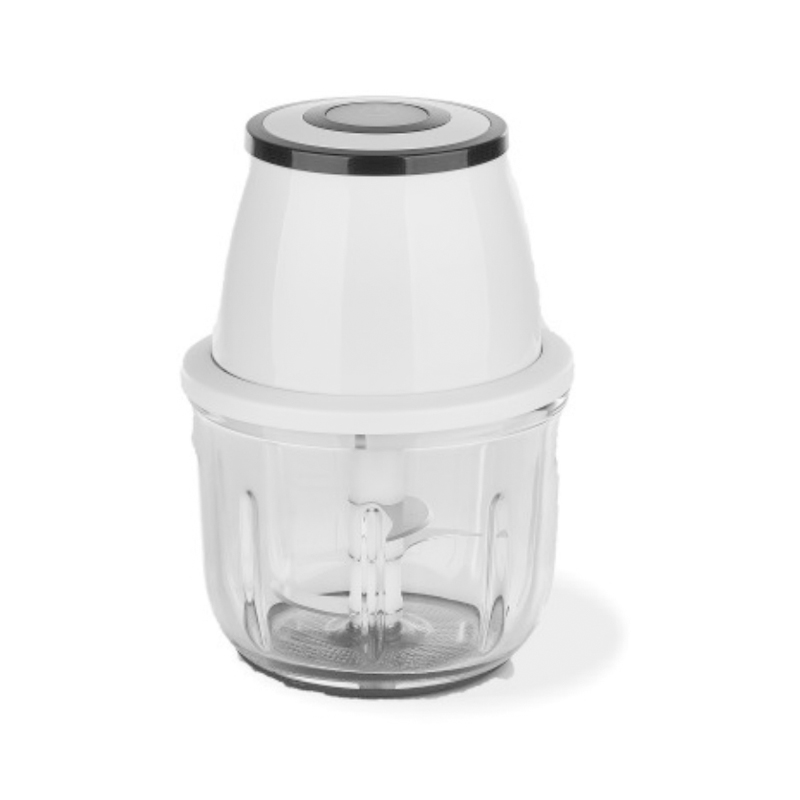 SEE more
SEE more
 SEE more
SEE more
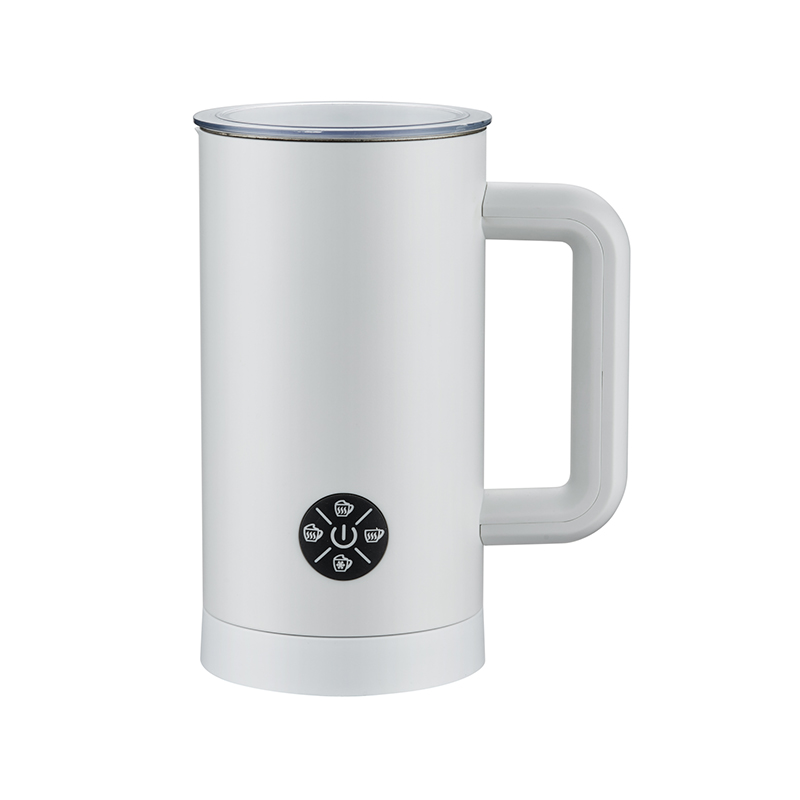 SEE more
SEE more
